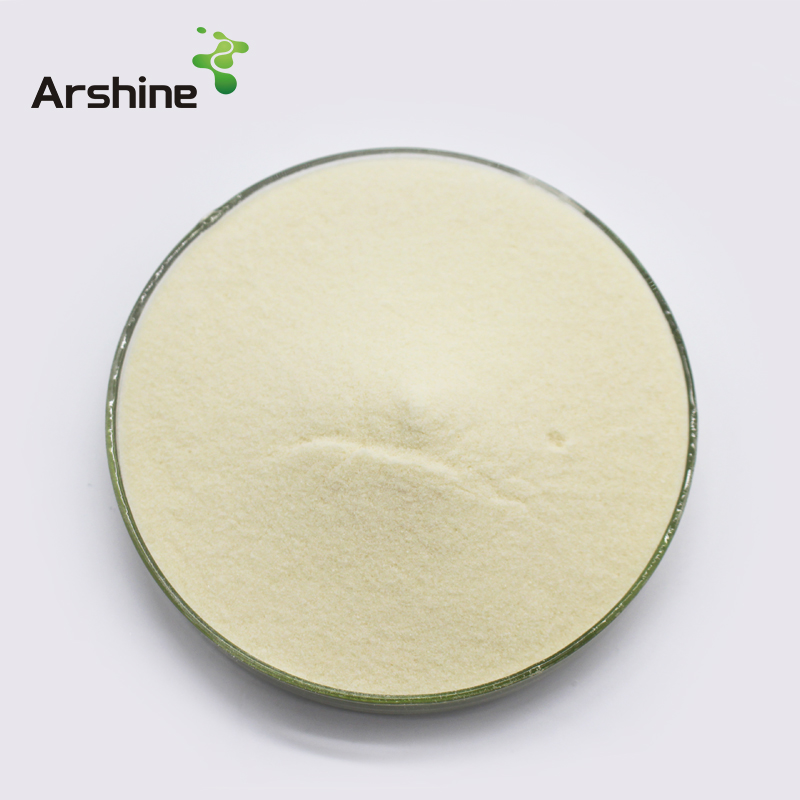
Soy Protein Isolated is a highly refined or purified form of soy protein with a minimum protein content of 90% on a moisture-free basis
Introduction
Soy Protein Isolated is a highly refined or purified form of soy protein with a minimum protein content of 90% on a moisture-free basis. It is made from defatted soy flour which has had most of the nonprotein components, fats and carbohydrates removed. Because of this, it has a neutral flavor and will cause less flatulence due to bacterial fermentation.
Functions and Applications
Soy protein isolated is mainly used to improve the texture of meat products, but is also used to increase protein content, enhance moisture retention, and are used as an emulsifier. The flavor is affected,[citation needed] but whether it is an enhancement is subjective.
Soy protein is a protein that is isolated from the soybean. It is made from dehulled, defatted soybean meal. Dehulled and defatted soybeans are processed into three kinds of high protein commercial products: soy flour, concentrates, and isolates. Soy protein isolate has been used since 1959 in foods for its functional properties. Recently, soy protein popularity has increased due to its use in health food products, and many countries allow health claims for foods rich in soy protein.
1.Meat products The addition of soy protein isolate to higher grade meat products not only improves the texture and flavor of the meat products but also increases the protein content and strengthens the vitamins. Because of its strong function, the dosage can be between 2 and 5% to maintain water retention, ensure fat retention, prevent gravy separation, improve quality and improve the taste.
2.Dairy products Soy protein isolate is used in place of milk powder, non-dairy beverages and various forms of milk products. Comprehensive nutrition, no cholesterol, is a substitute for milk. The use of soy protein isolate instead of skim milk powder for the production of ice cream can improve the emulsification properties of ice cream, delay the crystallization of lactose, and prevent the phenomenon of “sanding”.
3.Pasta products When adding bread, add no more than 5% of the separated protein, which can increase the bread volume, improve the skin color and extend the shelf life. Add 2~3% of the separated protein when processing the noodles, which can reduce the broken rate after boiling and improve the noodles. The yield and the noodles are good in color, and the taste is similar to that of strong noodles.
4.Soy protein isolate can also be used in food industries such as beverages, nutritious foods, and fermented foods, and has a unique role in improving food quality, increasing nutrition, lowering serum cholesterol, and preventing heart and cerebrovascular diseases.
Specification:
| Inspection Index | Specification |
| Sensory organ index | |
| Appearance | Light-yellow powder |
| Odor | No- peculiar smell |
| Impurity | No foreign matters to the naked eye |
| Physical and chemical index | |
| Crude protein ( dry basis 6.25) % | 90.45% |
| PH value | 7.39 |
| Moisture,% max | 6.35 |
| Fat,% max | 0.31 |
| Ash content,%max | 5.01 |
| Function Index | |
| Emulsion ( protein : water: oil) | 1:4:4 , 1:5:5 |
| Gel text(g/mm) | 2255.8/23.041 |
| remarks | Spraying lecithin |
| Microbiological | |
| Total plate count, (cfu per gram) | 1600 |
| E-coli. (cfu per 100grams) | Negative |
| Salmonella, (cfu per gram) | Negative |
| Packaging: 20 kg white paper bags with inner Food Grade HDPE BagApplication:Meat Product, Hot dog, Ham and Vegetarian food, bakery, etc..Storage condition: (Shelf Life:12Months)Keep away from rain or damp during transportation and storage, forbidden to pack or store together with odorants. Best temperature: Below 25℃ | |
Inquiry